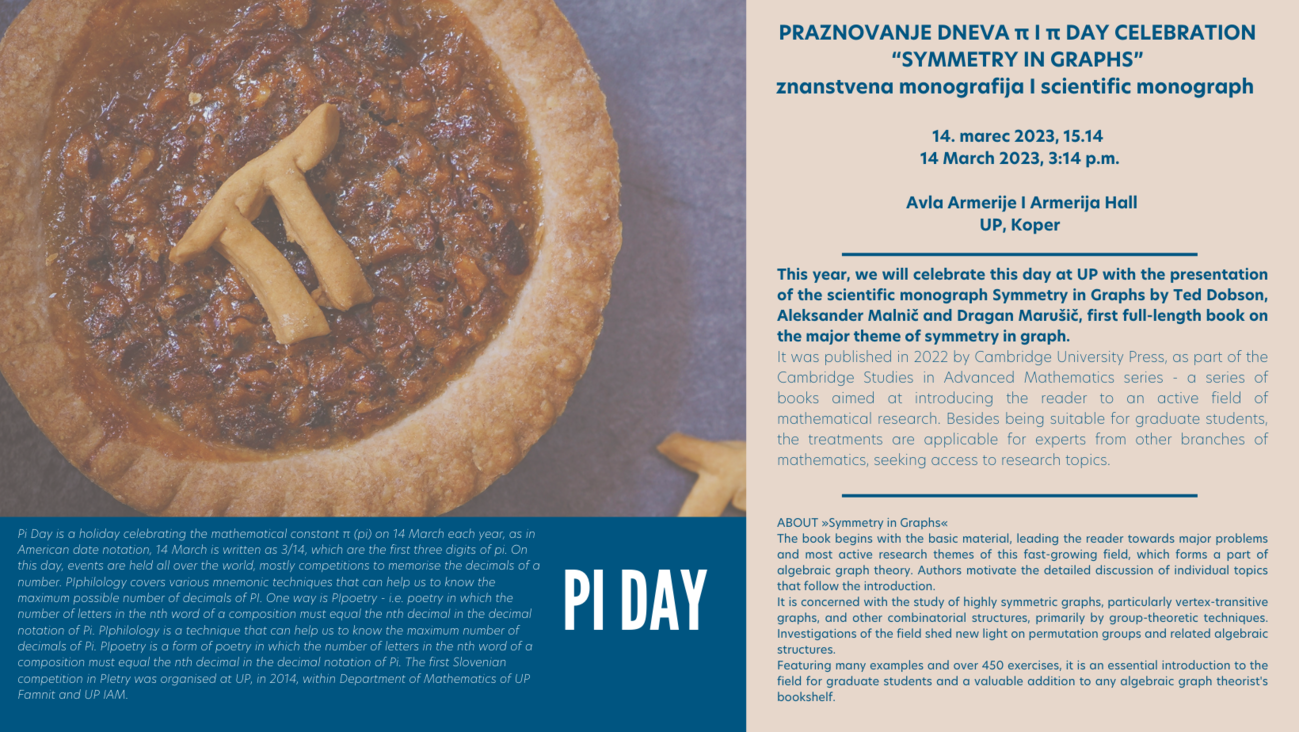Thursday, 9 March 2023 PI DAY CELEBRATION - PRESENTATION "SYMMETRY IN GRAPHS"
WHEN? 14 March 2023, 3.14 p.m.
WHERE? UP Armeria, Tito square 4, Koper
Pi Day is a holiday celebrating the mathematical constant π (pi) on 14 March each year, and is also the International Day of Mathematics. In the American date notation, 14 March is written as 3/14, which are the first three digits of pi. On this day, events are held all over the world, mostly competitions to memorise the decimals of a number. PIphilology covers various mnemonic techniques that can help us to know the maximum possible number of decimals of PI. One way is PIpoetry - i.e. poetry in which the number of letters in the nth word of a composition must equal the nth decimal in the decimal notation of Pi. PIphilology is a technique that can help us to know the maximum number of decimals of Pi. PIpoetry is a form of poetry in which the number of letters in the nth word of a composition must equal the nth decimal in the decimal notation of Pi. The first Slovenian competition in PIetry was organised at UP, in 2014, within Department of Mathematics of UP Famnit and UP IAM.
This year, we will celebrate this day at UP with the presentation of the scientific monograph Symmetry in Graphs by Ted Dobson, Aleksander Malnič and Dragan Marušič, first full-length book on the major theme of symmetry in graph. It was published in 2022 by Cambridge University Press, as part of the Cambridge Studies in Advanced Mathematics series - a series of books aimed at introducing the reader to an active field of mathematical research. Besides being suitable for graduate students, the treatments are applicable for experts from other branches of mathematics, seeking access to research topics.
ABOUT »Symmetry in Graphs«
The book begins with the basic material, leading the reader towards major problems and most active research themes of this fast-growing field, which forms a part of algebraic graph theory. Authors motivate the detailed discussion of individual topics that follow the introduction.
It is concerned with the study of highly symmetric graphs, particularly vertex-transitive graphs, and other combinatorial structures, primarily by group-theoretic techniques. Investigations of the field shed new light on permutation groups and related algebraic structures.
Featuring many examples and over 450 exercises, it is an essential introduction to the field for graduate students and a valuable addition to any algebraic graph theorist's bookshelf.





